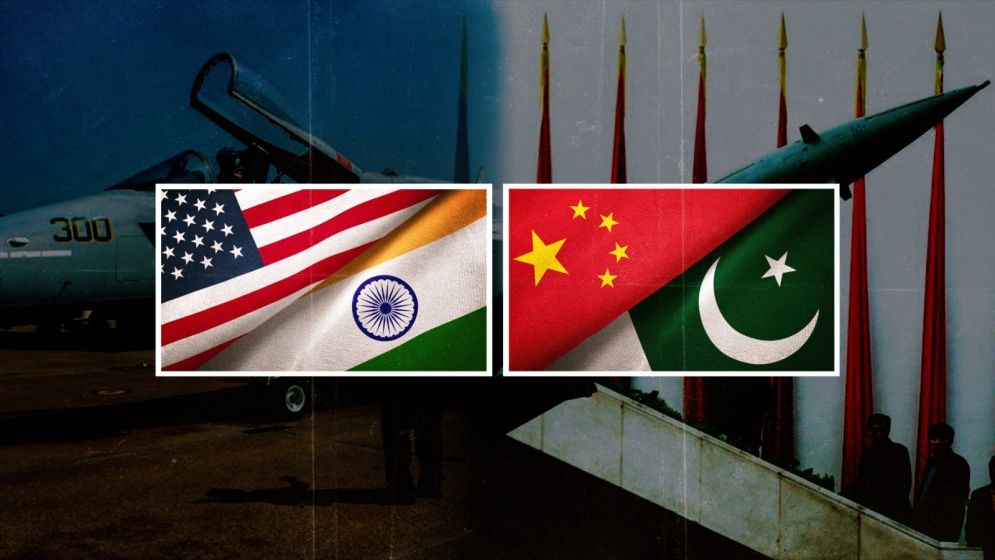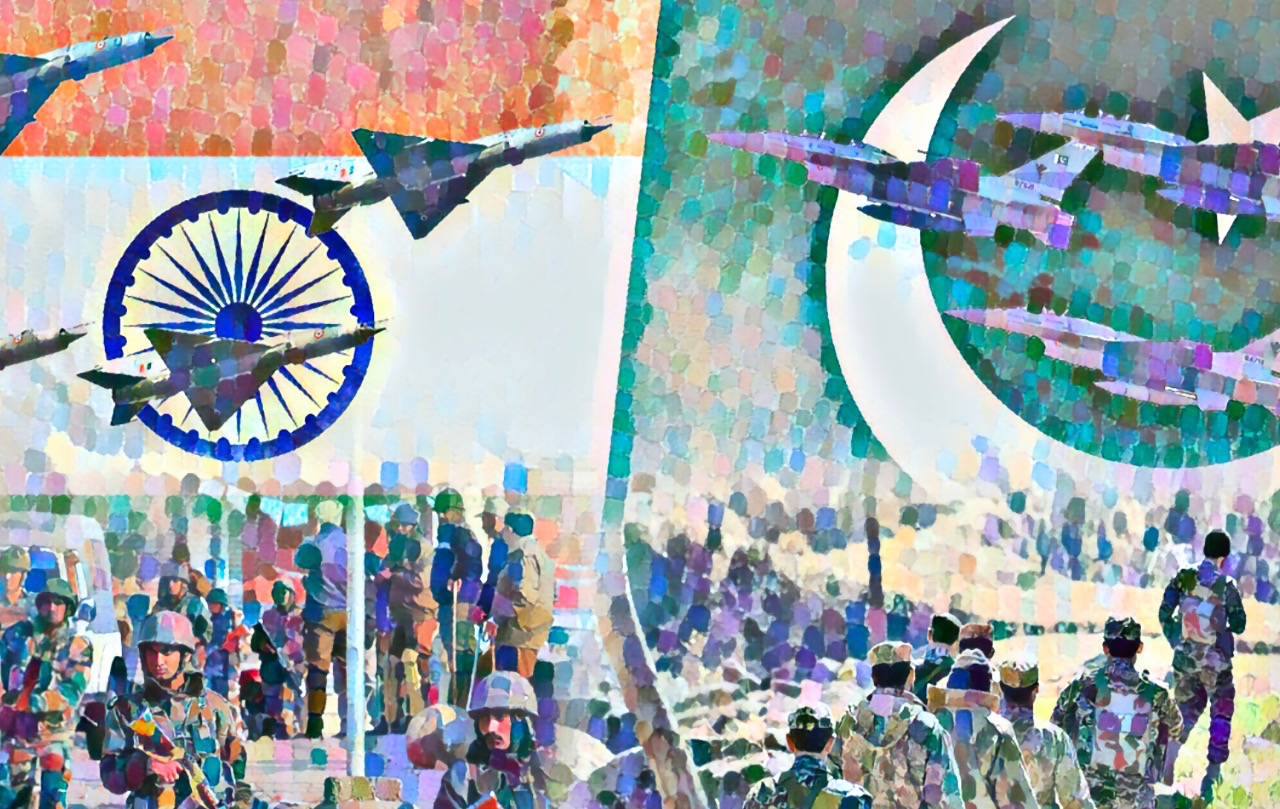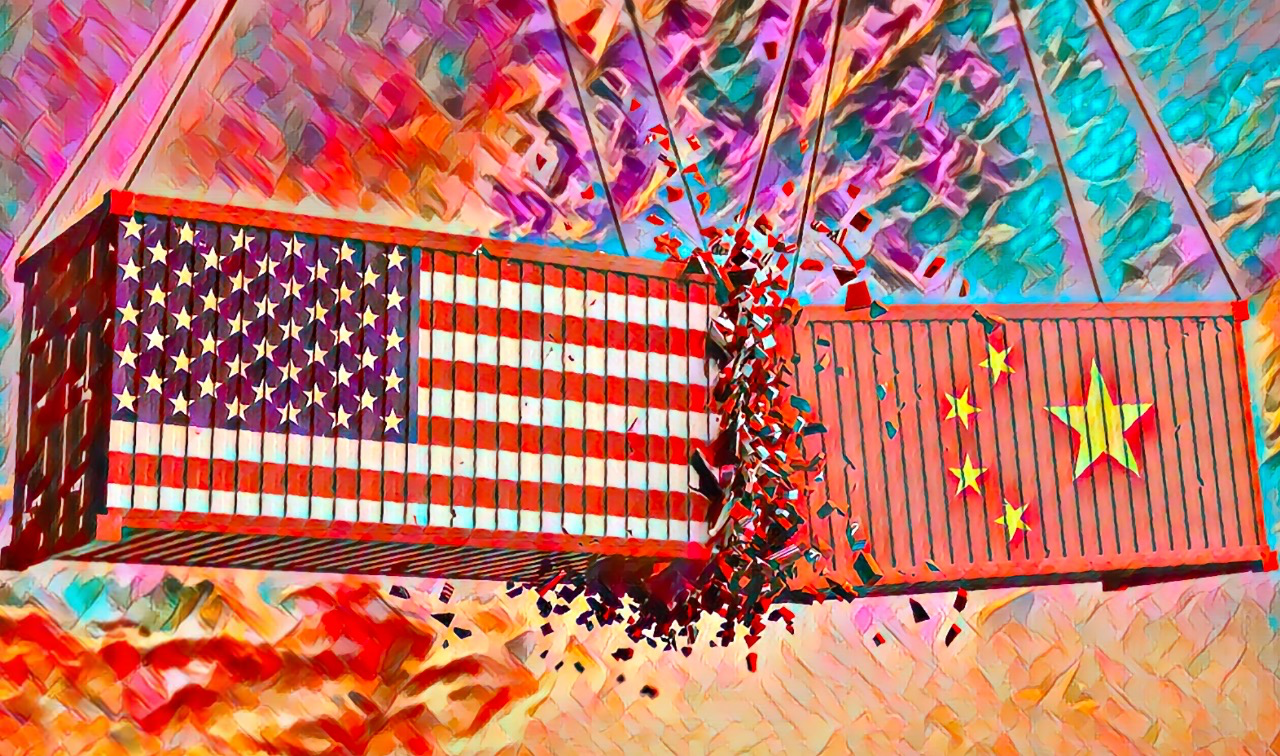Missiles, jets, and deterrence: India and Pakistan’s escalation will be a proxy ground of Beijing and the West’s arms test

The echoes of artillery fire may not yet have rolled across the Line of Control, but it seems like that the battle lines are already being drawn between India and Pakistan, with the world's great powers watching, calculating, and preparing.
After last week's deadly terrorist attack in Indian-administered Kashmir, the Indian government, under Prime Minister Narendra Modi, has handed its military what it calls “operational freedom” to respond.
The language is unmistakable: Delhi is angry, emboldened, and itching to reassert its version of deterrence, eroded since the post-Balakot calm. And Pakistan, for its part, is not cowering. Quite the opposite.
Islamabad is flaunting its arsenal — Chinese-built drones, missiles, and tanks — across military drills and social media platforms.
But beneath the India-Pakistan war factor, for the first time, there is the looming possibility of a real-world clash between Chinese and Western (or Western-aligned) weapons systems — between Chinese-designed armaments in Pakistani hands and India's eclectic mix of Russian, French, and domestically produced hardware, increasingly aligned with NATO standards.
Defense ministries across the globe are watching. The Pentagon and the PLA aren’t merely observers; they are students, preparing to extrapolate lessons for Taiwan, the South China Sea, and beyond.
The US and China have both urged restraint, though with thinly veiled self-interest.
Neither wants South Asia to become the fuse for a broader confrontation — yet neither is blind to the strategic opportunity such a conflict could present.
Beijing, which has been deepening its defense ties with Pakistan for over a decade, would get a real-time glimpse of how its platforms fare under combat conditions against a quasi-Westernized adversary.
Washington, too, would quietly monitor how India, its quasi-ally, performs under pressure — especially with Chinese-designed weapons bearing down on it.
It is not lost on observers like me sitting in Dhaka that South Asia’s two nuclear powers are edging closer to a direct military clash. Nor is it forgotten that China and India only recently deescalated a deadly border standoff in the Himalayas.
That uneasy calm however is now being tested — not on the heights of Ladakh, but in the valleys of Kashmir and across the Pakistani plains.

India’s amplified voice for war
Inside India, the political drumbeat is growing louder. Media and politicians alike have amplified their rhetoric, painting retaliation as a matter of national pride.
Meanwhile, Pakistan’s new army chief, General Asim Munir, has shown none of the de-escalatory instincts of his predecessor, Qamar Bajwa.
Both sides speak of "deterrence." In reality, they seek escalation dominance — the ability to strike harder, faster, and with greater psychological effect. What’s being tested is not just firepower, but the very architecture of deterrence in South Asia.
Will Modi’s India again gamble on airpower as it did in Balakot in 2019? And how will Pakistan — with a new, more aggressive military leadership — respond?
The stakes are clear — and so is the direction of travel. Asfandyar Mir, a Washington-based South Asia security expert, warns that the region is “moving toward a hot conflict, which is likely to be more intense than the 2019 crisis.”
That was the last time the two nuclear-armed neighbors came close to a full-blown war, and this time, both sides appear more determined — and more capable.
It’s a high-stakes contest of escalation dominance, one that India tried — and failed — to establish in 2019. That crisis ended not with decisive victory, but with an Indian fighter jet shot down and its pilot paraded on Pakistani television.
At the time, Pakistan’s response included the use of a JF-17 Thunder, its Chinese co-developed warplane, which fired a beyond-visual-range missile at an Indian military depot in Kashmir.
It was a performance not just for India, but for Beijing — and Washington.
Under President Trump then (2019) and again now, the US has largely stepped back. The US is not essentially going to pressure India to demur from retaliating as it sees fit, as its most recent presser suggested.
This abandonment of mediation creates a vacuum — one that may be filled by fire. As Boyko Nikolov, a military analyst and editor of BulgarianMilitary.com, put it: “This isn’t about strategic victory anymore. It’s about maintaining deterrence while managing domestic narratives.”
In both Delhi and Islamabad, the optics matter just as much as the outcomes. And that’s where miscalculation breeds catastrophe.
Already, Pakistan is adapting. It retaliated against Iranian strikes last year and used drones against Afghan-based terror threats — signaling a shift in doctrine toward India’s own “surgical strike” playbook.
But for all its bravado, Islamabad remains hobbled by internal economic and political fragility. Its brinkmanship may be impressive, but it may not be sustainable.
The bigger challenge for India lies farther east. China.

Clash of the titans
New Delhi’s military calculus is now split between two fronts: the Pakistani threat and the long-simmering standoff with China along the Himalayan border.
India has to factor in China as it has to consider the cumulative drain of its multi-year military deployments in Ladakh and Arunachal Pradesh. The specter of a two-front war is no longer theoretical.
And for Pakistan, China is not a distant ally — it is an active enabler. From nuclear technology and stealth-capable drones to warships and fighter aircraft, Beijing has spent decades building Pakistan’s capacity to confront India.
What was once a strategic partnership is now approaching something closer to military co-dependence.
As former Indian diplomat Yogesh Gupta remarked in a national newspaper, “Since 1949, China has been adversarial and jealous of India’s global standing. Its decision to flood Pakistan with weapons is not just opportunistic — it’s strategic.”
Gupta doesn’t mince words: in Beijing’s eyes, a weakened India is a win.
India, for its part, has not stood still since the 2019 crisis. It has spent the past five years overhauling its military posture, preparing not just for Pakistan but for a broader confrontation that might include China.
India has deployed Russian-made S-400 missile defense systems—among the most advanced in the world—capable of challenging Pakistan’s aerial capabilities and changing the calculus of any potential strike.
India has also plugged a key weakness exposed in 2019: the lack of beyond-visual-range (BVR) missiles. Today, Indian fighter jets fly with Meteor air-to-air missiles, giving them a significant edge in both range and accuracy.
The message is clear: if there is a fight this time, India intends not just to respond, but to dominate the skies.
But air dominance won’t be uncontested. In what could become one of the most consequential air combat matchups in recent history, analysts are anticipating a clash between Pakistan’s Chinese-supplied J-10C fighter jets and India’s French-made Rafales.
It would be, as defense analyst Boyko Nikolov noted, “a rare, if not unprecedented, head-to-head between advanced Chinese and Western combat aircraft.”
The J-10C, armed with China’s PL-15 BVR missiles and AESA radar, represents Beijing’s bold entry into 4.5-generation warfare.
The Rafale, by contrast, is a proven combat platform used in multiple theaters, equipped with Meteor missiles that out-range the PL-15 and supported by some of the most sophisticated electronic warfare systems in the world.
The world will be watching closely. “Intense global scrutiny,” Nikolov said, will fall on these duels—not just to crown a tactical winner, but to assess whose defense industry delivers in combat.

Attentions of the military watchers
From Southeast Asia to the Middle East, military planners are thus paying attention.
The future of global arms procurement, and the reputational capital of both Chinese and Western manufacturers, could hinge on what happens in the skies over Kashmir.
Even the lower-profile engagements will matter. Take, for example, the expected matchup between India’s Tejas Mk1A and the JF-17 Block III—a clash of lightweight, cost-effective fighters.
These jets represent a different kind of arms race: one for affordability, versatility, and rapid deployment in developing air forces. With AESA radars and next-gen missiles, the JF-17 punches above its weight. But the Tejas, integrating Western subsystems with Indian design, reflects New Delhi’s ambition for self-reliance.
Their encounter, though less glamorous than a J-10C-Rafale showdown, may matter more to smaller nations weighing their next fighter purchase.
On the ground, the artillery matchups are equally symbolic. Pakistan’s Chinese-supplied SH-15 self-propelled howitzers could face off against India’s domestically manufactured K9 Vajra, based on a South Korean design.
The question is no longer just about firepower—it’s about mobility, precision, and the speed of integration into broader battlefield networks.
According to Nikolov, such engagements would be “dissected by defense analysts” around the world. Real-world data on Chinese weapons systems in combat is rare. This crisis could become Beijing’s trial by fire.
For China, a strong showing would bolster its standing as an arms exporter; a poor one could set back its military-industrial ambitions by a decade.
And yet, weaponry is only part of the story.
It is not the missiles or jets alone that determine the course of war—it is how they are used. Strategy, leadership, training, and morale will shape outcomes just as much as hardware.
A lot will depend on how this confrontation unfolds. Which systems are used, how both sides respond, and what impact those weapons actually have in the fog of war.
In Dhaka, we know that South Asia has long danced at the edge of disaster. This time, the choreography includes Chinese radar arrays, Russian defense systems, French fighter jets, and American-built engines—all layered atop old rivalries and new ambitions.
The confrontation between India and Pakistan may start as a regional clash. But it could end as a global test—of weapons, of alliances, and of the fragile balance of power in a world increasingly defined by multipolar friction.
—-
Md Sazzad Amin is an entrepreneur and an armchair political analyst

